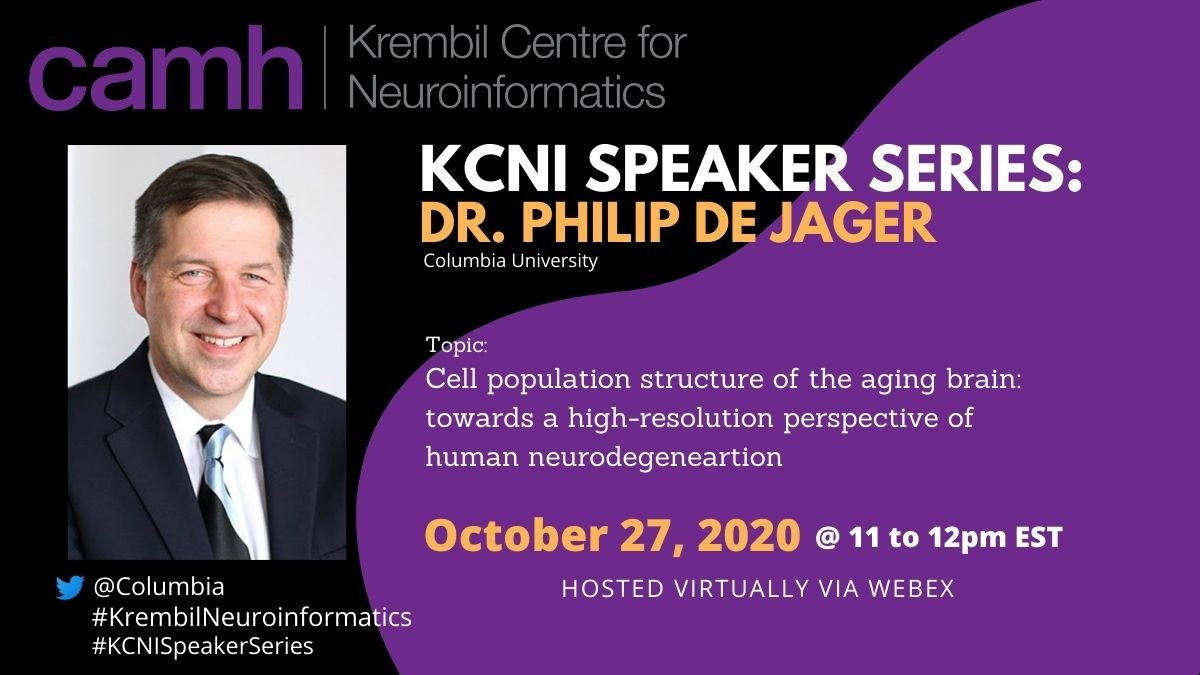Suggestions and Feedback? Email us at krembil.centre@camh.ca
The Krembil Centre for Neuroinformatics at CAMH || Looking for more? Email us at krembil.centre@camh.ca
The KCNI Speaker Series
The Krembil Centre for Neuroinformatics was pleased to launch a new Speaker Series highlighting exciting discoveries, advancements and collaborations in Neuroinformatics.
The series features speakers from a wide range of backgrounds, expressing the diversity of the Krembil Centre’s scientific breadth. Each month we will hear a new perspective on the current state of multi-scale neuroscience, from gene to circuits, from brain dynamics to cognitive modeling and populations. READ MORE.
Missed the talk? Watch the recordings here!
Upcoming Speakers:
For more information and event details. Click here.
News / Resources
At the Krembil Centre for Neuroinformatics, we work in an open, team science environment—with an emphasis on reproducible and accessible results.
Our centre is designed to foster collaboration, spark conversations and drive convergence.
Our team employs machine learning, artificial intelligence and computational modeling to integrate and analyze data across scales, including genomics, proteomics, electrophysiology, brain imaging, mobile and wearables, demographics, and environmental data. Teams collaboratively conduct multi-scale modelling studies to bridge the various levels of structure and function in the brain—from genes to circuits to behaviour, including wakefulness and sleep.

